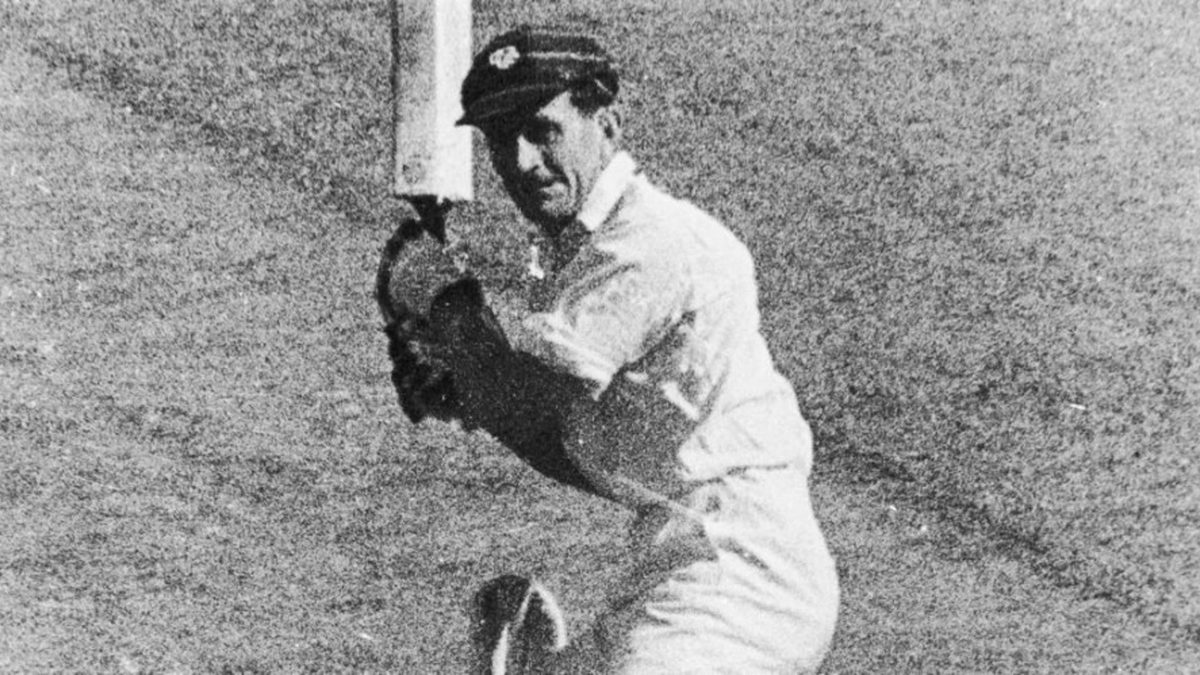
Ken “Slasher” Mackay would never have been called a great entertainer – but Test crowds of the Fifties and Sixties still loved him.
Mackay, Kenneth Donald, MBE, died on June 12, 1982, aged 56.
Ken Mackay was one of the best and most popular cricketers ever produced by Queensland. As a left-handed middle-order batsman, he possessed a highly distinctive style, this endearing him to crowds which otherwise might have found his rate of scoring unendurably slow. At the crease he stood impassively, cap at a rakish angle, knees slightly bent, chewing compulsively. He employed negligible back-lift and was an uncanny judge of line, often leaving balls that seemed to make the bails quiver. When a stroke was required, his most prolific were a deflection wide of cover-point’s right hand and a type of “shovel” shot past mid-wicket.
He was more often a match-saver than a match-winner. Very occasionally he would play an innings of remarkable and unexpected aggression and unorthodoxy, one such being at Lord’s against Middlesex in 1961 when he made a whirlwind 168. As a right-arm medium-paced bowler, he became in the early Sixties a useful member of the Australian attack, possessing the ability to contain batsmen for long periods and often taking good wickets. He had a stealthy, almost apologetic approach to the wicket, but the innocuous appearance of his deliveries masked subtle variations of pace and swing.
“Slasher” Mackay first played grade cricket in Brisbane at the age of 15. By 1946 he had won a place in the Queensland side, the start of a first-class career that lasted for 18 years and included 100 appearances for his state and 37 for Australia. He became captain of Queensland in 1954/55 and in 1956 toured England with Ian Johnson’s side. He made his Test debut at Lord’s, in the only Test won by Australia that summer, batting for more than seven hours in the match, yet scoring only 38 and 31. In his second innings, which lasted for 264 minutes, he fulfilled what was to become a familiar sheet-anchor role while Benaud played a brilliant innings of 97.
Mackay’s performance in the next two Tests threatened his international career: at Headingley he made two and two, at Old Trafford Laker dismissed him for a “pair”. He was dropped for the last Test at The Oval and was not an original selection for Ian Craig’s team to tour South Africa in 1957/58. However, he was added to Craig’s side at the last moment and, with Test scores of 3, 65 not out, 63, 32, 52 not out, 83 not out and 77 not out, he justified his selection.
Mackay’s best Test performances were achieved on a tour of Pakistan and India in 1959/60. On a matting wicket at Dhaka he helped Australia to gain their first Test win in Pakistan, recording in the second innings the remarkable bowling figures of 45-27-42-6. Against India at Madras he made his highest Test score, 89 – ended, somewhat surprisingly, when he was stumped.
His best-remembered Test innings must have been against West Indies at Adelaide in 1961, the series of the tied Test. With 100 minutes of the game remaining Australia, trailing by many runs, lost their ninth wicket. As Lindsay Kline joined Mackay a West Indian victory seemed assured. However, dour defence by both batsmen frustrated all the efforts of Worrell’s side and the game ended with Australia’s last pair still together, Mackay undefeated with 62, made in almost four hours.
He played his last Test against England at Adelaide in January, 1963, and not long afterwards announced his retirement from first-class cricket, his final appearance being for Queensland against Victoria in 1964. “In affection and gratitude”, the people of Brisbane contributed some £20,000 to a “bob in for Slasher” campaign, conducted by the city’s morning paper. For 15 years after his retirement Mackay was a state selector, and in 1977 he was appointed state coach for Queensland. In 1962 he was made an MBE for his services to cricket.








